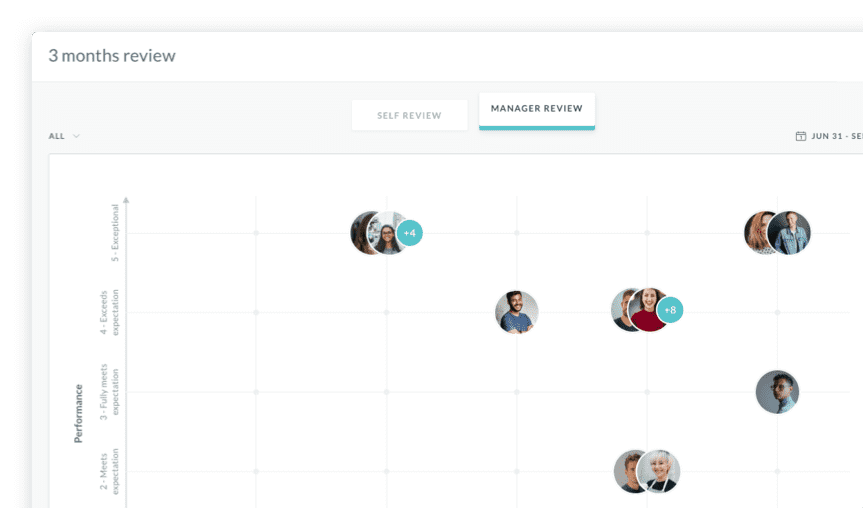Five Ways in Which Work Environment Affects Employee Productivity

Let Us Help You Engage Your Employees!
Onboard New Hires Safely, Efficiently, and Effectively.
Are You Interested in Improving Your HR Organization?
Employee productivity in most cases is synonymous with employee engagement. When employees engage actively, they offer their best abilities to the organization. To substantiate, insights from the Workplace Research Foundation reveal an exciting take on the correlation between the two. They reveal that almost 40 percent of engaged workers prove to be immensely productive. HR managers must pay heed to the need to give employees an engaging work environment. The next fundamental prerequisite for employee productivity is the satisfaction and happiness of employees. As per Qualtrics, happy employees are five times more likely to stick to their organizations. All of these are attributes of the work environment that employees get in their respective companies.
There are diverse ways in which the working environment drives productivity. In the absence of an ideal work environment, employees feel burdened, unheard, disengaged, and unhappy. Although remote working opportunities and verticals are witnessing a steep hike, curating the right work environment is imperative. HR managers have their tasks made more complex in terms of sustaining the productivity of remote employees. Again, giving them an encouraging, empathetic, and inspirational virtual working environment is what will work the best. Most of the determinants of high productivity and engagement we talk about are elements of the working environment. Together they create a favorable and conducive work environment to give their best and innovate to overcome insurmountable challenges. To elucidate this assertion further, this blog will illustrate the various ways in which the work environment impacts productivity.
A Positive Work Environment Drives Positive Changes
Positivity is a luxury in the contemporary world, for humans tend to be more impressed by negative thoughts. In such a scenario, if employers and HR managers can foster a culture of positivity in the workplace, it can do wonders to enhance individual productivity. This positivity may come in various virtues and realms, adding up to make an opportune company culture. These include empathy, gratitude, employee wellness, team building, cordial workplace interactions, and so on.
Also, a positive work environment should not differentiate between genders and should ensure safety for all. In such a workplace, people will not have any other concerns than focusing on the quality of their work and organizational goals. To explain this better, we must pay attention to the findings of a report by Salesforce. It cites that if employees’ opinions are heard and valued, they are 4.6 times more likely to deliver performances to the best of their abilities. This validates that a positive, inclusive, and rewarding work environment inspires the best in employees. It drives positive changes in workers’ attitudes, and the overall impact is seen in the company culture’s overwhelming positivity.
A Favorable Work Environment Leads to a Reduction in Absenteeism
Employee absenteeism is a big hurdle in the flow of productivity of an individual, his team, and the organization as a whole. Yes, employees deserve their share of leaves and entitlements for genuine reasons. In genuine cases, the organization should not have any objections and rather be supportive. However, it may also be feasible that employees go absent from work frequently because of the work environment. Other causes of absenteeism may include workplace harassment, disengagement, employee burnout, and anxieties besides illness and personal reasons.
Given that, HR managers must identify these stressors among employees and support them. When employees’ issues are addressed in an assuring way, they will not have to escape from work to avoid stress or fatigue. A survey by CareerBuilder states that more than 60% of workers are burned while working. There is every reason why this can contribute to increased absenteeism and decreasing productivity. So, if the working environment provides better stress management opportunities to workers, scenarios can be better.

An Inspiring Work Environment Promotes Creativity and Innovation
Employee productivity is a dynamic term, and to take it to new levels, employees should have creative and innovative visions. Also, their creative insights can make a progressive impact on the overall success of the organization. After all, thinking outside the box is needed the most to survive the great competitiveness of the modern age. However, it is hard to inspire creativity if employees are not free to express their opinions. If they do not feel a sense of belonging and feel their ideas are invaluable to their managers, they will lose the spark.
On the other hand, in a working environment where employees are valued, empowered, and granted creative freedom, innovation will become a part of the company culture. As per LinkedIn Learning, creativity is the most critical skill in the world. Simultaneously, for this skill to have the right breathing space and contribute to productivity, the working environment needs to be inspiring. Besides, as Gallup reported, around 35% of employees get the chance to be creative only a few times a year. This is where they have to compromise with their natural productivity. The aura of the working environment should be such that employees feel a natural knack for investing creativity and innovation in every task they do.
A Learning-Oriented Work Environment Facilitates Continuous Development
A work environment where feedback is shared systematically and leaders support learning is ideal for high productivity. In such a work environment, employees get endless opportunities to recognize their shortcomings and areas of improvement. Based on the constructive feedback shared by their superiors, workers can streamline their professional development. They can learn something new every day with every task and hence augment their productivity. In fact, according to Hubspot, more than 60 percent of employees are receptive to feedback and would like to receive it more often. This is because they find feedback valuable to their learning, development, and growth. Hence, in a work environment that supports learning and growth opportunities, productivity will remain high.
In addition to sharing feedback, leaders or managers should also be selfless and sensitive to various employees’ learning needs. They will create enough opportunities for workers to analyze their employee's performance and work on consistent improvement. On the other hand, if leaders are not supportive, it can restrict the productivity of employees. To explain, according to a survey from Glassdoor, more than 85 percent of workers anticipate support from their employers. In the absence of direction from superiors and an encouraging work environment, employees will witness a decline in their work efficiency.

A Cordial Workplace Stimulates Cooperation
Workplace relationships and cooperation between colleagues are essential for employee engagement. To a large extent, cordiality in employee relationships depends on the working atmosphere. If a working environment is stained with office politics and conflicts, it will impact individual productivity and efficiency. On the other hand, if a work environment is enriched with mutual respect and collaboration, it becomes beneficial for everyone.
A lot of operations and projects in the corporate world are to be achieved in teams. In such situations, the efficiency of the outcome becomes dependent on the coordination between team members. For that, there should be healthy cooperation among colleagues and appreciation for each other’s abilities. This is, in fact, the reason why a lot of HR managers and employers pay heed to team-building activities.
To conclude, as explained above, the work environment impacts employee productivity in ample ways. Employees feel empowered to raise the bar of their performance when they feel happy, safe, appreciated, and supported. Furthermore, the work environment or the workplace’s physical environment depends on how managers and employers define working conditions. It further depends on how individual behaviors add up to formulate a company’s working culture. As long as managers realize the need to invest in giving employees a worthwhile work environment, workers’ productivity and motivation will remain high.
About Author:
This article is written by a marketing team member at HR Cloud. HR Cloud is a leading provider of proven HR solutions, including recruiting, onboarding, employee communications & engagement, and rewards & recognition. Our user-friendly software increases employee productivity, delivers time and cost savings, and minimizes compliance risk.
Keep Reading
Workforce Management through Tech-Based Tools: Streamlining Construction and Roofing Operations
As industries evolve, adopting innovative approaches to workforce management is essential
Skills vs Abilities in the Workplace
Modern-day workplaces are facing many challenges that were not foreseeable a few years






